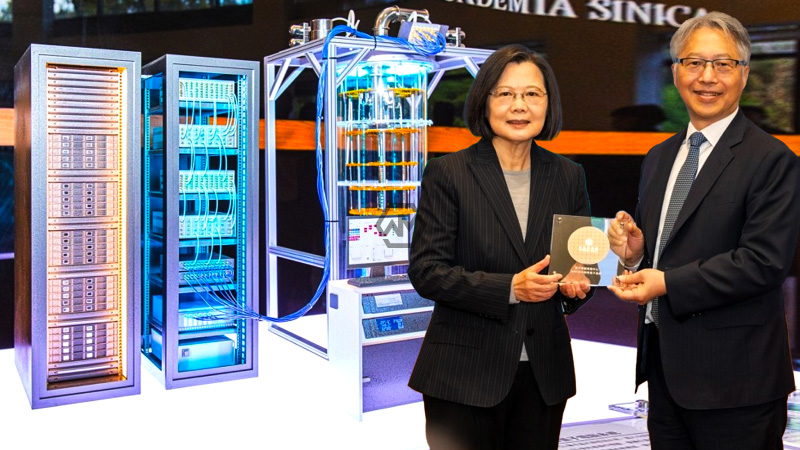- This includes utilizing progressed parts like high-thickness coaxial links, high-thickness RF connectors, and electromagnetic safeguard bundling boxes for quantum chips.
- President Liao revealed the organization’s obligation to lay out a public quantum innovation research focus at its South Grounds in Tainan.
- Also, she highlighted the meaning of utilizing quantum cryptography to improve security in regular day-to-day existence.
President Tsai Ing-wen on Monday (Jan. 29) reviewed Taiwan’s historic steps in building the country’s debut quantum PC.
This aggressive undertaking, driven by The scholarly community Sinica, marks a critical achievement in Taiwan’s mechanical ability. The emphasis on a 5-qubit superconducting quantum PC exhibits the country’s obligation to remain at the front line of another time possibly characterized by quantum innovation.
Taiwan President Inspected Quantum Computer
Getting a self-created 4-inch quantum wafer from the establishment, President Tsai hailed this accomplishment as a mechanical achievement as well as a demonstration of Taiwan‘s capacities in the domain of cutting-edge innovation.
Featuring the gigantic capability of quantum registering, Tsai underlined its job as the cutting-edge processing innovation ready to upset different areas, including artificial intelligence, money, and biotech.
A financial plan of NT$8 billion (US$256 million) has been designated for a far-reaching five-year program committed to propelling quantum innovation beginning around 2022.
The scholarly community Sinica President James Liao gave experiences into the organization’s advancement in chip plan and qubit control advancements. The control framework for qubits will be made available to IT organizations for testing and creating important applications, encouraging coordinated effort among the scholarly community and industry.
Chen Chii-dong, an individual at The scholarly community Sinica’s Organization of Physical Science and Exploration Place for Applied Sciences, made sense of the unpredictable electronic innovations expected for the low-temperature framework.
This essential drive expects to beat the extraordinary difficulties related to creating superconducting quantum chips, requiring conditions not pertinent to current semiconductor creation processes.



